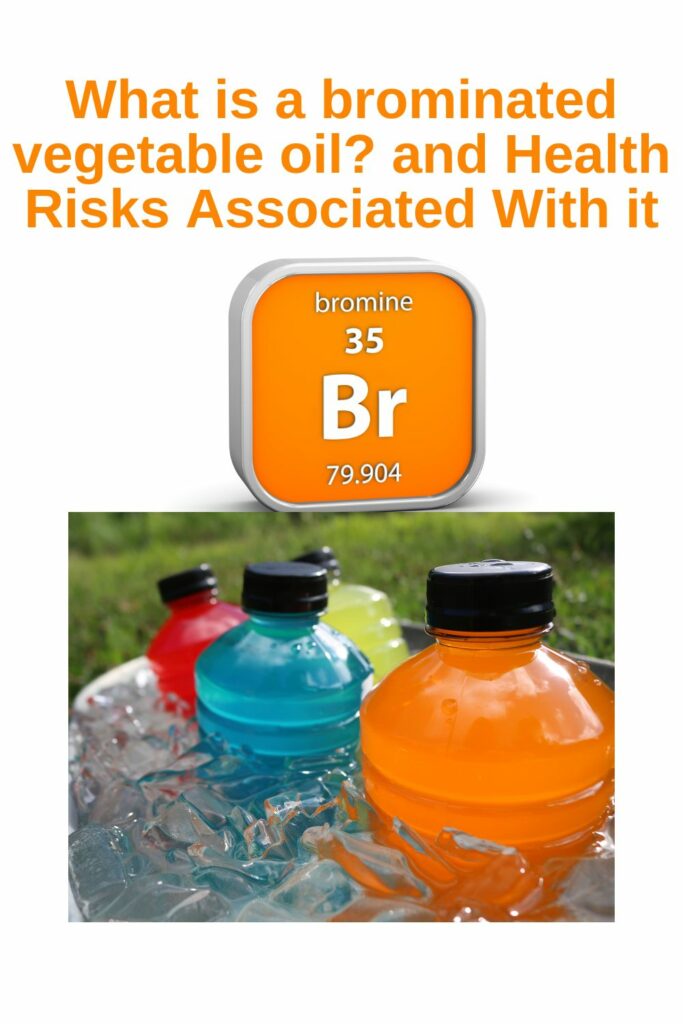Is Brominated Vegetable Oil used as a food additive pose health risks? As per the CNN article on November 2, 2023, The US Food and Drug Administration has announced a proposal to revoke the nationwide regulation authorizing the use of brominated vegetable oil, or BVO, in food.
This post serves me or anyone interested in why the risks are associated with BVO. We want to stay on top of the health news.
Brominated vegetable oil (BVO) is a vegetable oil that has been treated with bromine. Bromine is a halogen element added to the oil to make it denser and more stable. BVO is used in some beverages, such as citrus-flavored soft drinks, to prevent the flavoring oils from separating from the water.
BVO has been a food additive since the 1920s but has recently become more controversial. Some studies have shown that BVO can harm the thyroid gland and other organs. As a result, some beverage companies have reformulated their products to remove BVO.

Image: What is a brominated vegetable oil? And Health Risks Associated With it
The US Food and Drug Administration (FDA) has approved BVO as a food additive, but it has limited the amount that can be used in beverages to 15 parts per million. The FDA is also considering banning BVO altogether.
After a review of the evidence, “the intended use of BVO in food is no longer considered safe after the results of studies conducted in collaboration with the National Institutes of Health (NIH) found the potential for adverse health effects in humans,” the FDA said in a November 2 statement.
Potential risks associated with BVO:
- Thyroid problems: BVO can interfere with the thyroid gland’s ability to produce hormones. This can lead to several health problems, including fatigue, weight gain, and sensitivity to cold.
- Reproductive problems: Some studies have shown that BVO can damage the reproductive system in animals. It is not clear whether BVO has the same effects in humans.
- Neurological problems: Some studies have shown that BVO can damage the nervous system in animals. It is not clear whether BVO has the same effects in humans.
CNN asked questions, and Dr. Leana Wen answered the pertinent questions.
Dr. Leana Wen is a CNN Wellness medical expert. Wen is an emergency physician and health policy and management professor at the George Washington University Milken Institute School of Public Health. She previously was Baltimore’s health commissioner.
What is the evidence that suggests its authorization should be revoked?
Wen: Questions about BVO’s safety have been raised for decades. This includes a 1976 study that found consumption of BVO by pigs damaged their hearts, kidneys, livers, and testicles. A more recent study, published in 2022 and cited explicitly by the FDA in its recent decision, found that rats given BVO had accumulations of BVO’s derivatives in their heart, liver, and fat. Moreover, this study, done in collaboration with the National Institutes of Health, found that BVO led to changes in the thyroid, with thyroid cells growing more prominent and increasing the production of the thyroid-stimulating hormone.
CNN: What can you tell us about red dye No. 3 and the studies linking it to health risks?
Wen: The FDA banned red dye No. 3 over two decades ago for use in cosmetics after its use was shown to be associated with cancer in rats. Another study, published in 2012, provided more evidence for the association of animal cancer. Several studies have also linked the consumption of this dye to hyperactivity and other behavioral challenges in children. The use of red dye No. 3 is severely restricted in other countries, including those in the European Union; however, it remains allowed for use in food and drinks in the US, including in quite a few candies.
CNN: Since these products are not yet banned in the US, should people worry about products that contain BVO and red dye No. 3? Are there steps they should be taking to reduce risk?
Wen: I think it’s perfect that we have a rigorous regulatory agency in the FDA that constantly evaluates consumer products’ safety. When new evidence emerges, the FDA scientists review the data and revise guidelines accordingly. Moreover, the FDA is responsive to comments from the public, including advocacy organizations that are often very proactive about examining potential risks.
As for red dye No. 3, it’s currently in so many foods that it may be difficult to avoid everything altogether for most people. Parents with children who have hyperactivity or who are particularly sensitive to hyperactivity and behavioral conditions should check food and medication ingredient labels. In food, red dye No. 3 is often listed as “FD&C Red #3,” in medicines, it is listed in the inactive ingredient section.
Of course, there are other reasons to reduce the consumption of sodas and candies. Consumption of large amounts of sugary, ultra-processed foods is associated with a myriad of health problems, including diabetes, obesity, and heart problems. Try to replace some sodas with water and add fresh fruit and other healthy snacks like nuts, hummus, and yogurt to your diet.
Takeaway
My takeaway from the studies is that how much and how often you drink matters. If someone drinks one soda at a barbecue that happens to contain BVO, that’s not a big deal. However, if someone is drinking a soda a day, every day, they should be careful and check out the ingredients.